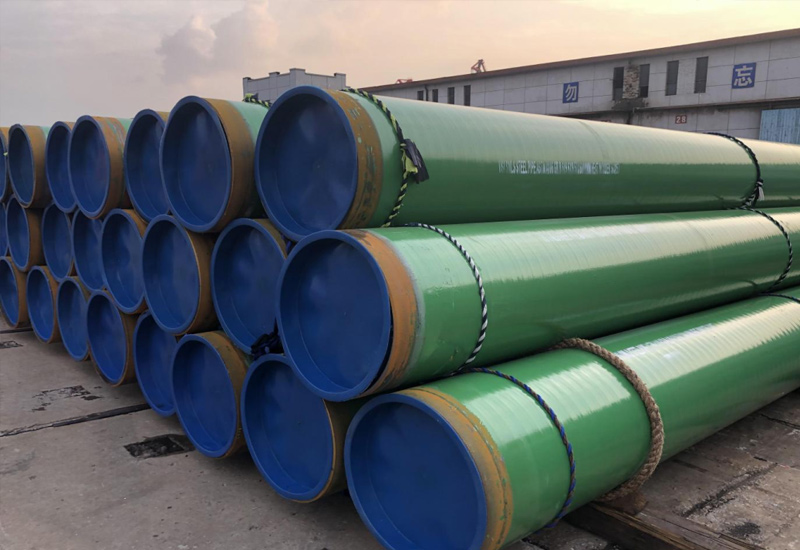HOT BLOG TAGS
ISO 3183
ISO 3183 International Standard: Technical Specifications for Pipeline Steel Pipes in Petroleum and Natural Gas Industries
1. Standard Overview and Evolution
ISO 3183, titled “Petroleum and natural gas industries — Steel pipe for pipeline transportation systems”, is an ISO-developed standard co-published with the American Petroleum Institute (API) as API SPEC 5L (46th Edition). It provides unified technical requirements for seamless and welded steel pipes used in global oil, gas, and hydrocarbon product transportation pipelines. The latest edition, ISO 3183:2019, supersedes the 2012 version and harmonizes global pipeline engineering specifications.
Key Developments:
2007 Edition: Consolidated prior split standards, introduced Product Specification Levels (PSL 1/2), and added high-grade steels: L625 (X90), L690 (X100), L830 (X120).
2019 Edition: Enhanced technical clauses, expanded high-strength steel coverage, and improved strain-based design provisions for extreme environments (Arctic, deepwater, sour service).
Table: ISO 3183 Evolution Timeline
| Edition Year | Key Updates | Steel Grades Covered |
| 1996 (ISO 3183-1) | Initial release (A-level quality) | L175–L555 |
| 2007 | Unified standard; PSL system; High-grade steels | Added X90, X100, X120 |
| 2019 | Harmonization with API 5L (46th Ed.) | Extended high-strength grades |
2. Product Scope and Technical Classification
2.1 Applicable Products & Dimensions
Pipe Types: Seamless, welded (longitudinal/submerged arc welded), plain-end, threaded, coupled, belled, or spigot pipes.
Exclusions: Cast iron pipes.
Size Range:
Outer Diameter (OD): 10.3 mm to 1,600 mm
Wall Thickness (WT): 0.8 mm to 60 mm
Materials: Carbon-manganese steels, microalloyed steels with Nb, V, Ti.
2.2 Product Specification Levels (PSL)
| Requirement | PSL 1 | PSL 2 |
| Impact Testing | Optional (unless specified) | Mandatory |
| NDT Standards | Basic | Enhanced (e.g., AUT for welds) |
| Chemical Control | Standard limits | Stricter (e.g., S ≤ 0.005%, P ≤ 0.020%) |
| Hardness Testing | Not required | Mandatory for sour service |
| Supplementary Tests | Limited (e.g., hydrostatic) | HIC, SSC, DWTT, CTOD (as specified) |
PSL 1: For non-critical applications (low-pressure, non-sour environments).
PSL 2: For severe conditions (high-pressure, sour service, Arctic, seismic zones).
3. Technical Requirements & Performance Metrics
3.1 Dimensional Tolerances
| Parameter | Tolerance |
| Outer Diameter | ±0.5% (OD ≤ 508 mm); ±0.75%–1.0% (OD > 508 mm) |
| Wall Thickness | Seamless: ±12.5%; Welded: ±7.5%–±10% |
| Length | +100 mm/–0 mm (for specified lengths) |
| Straightness | ≤0.2% of pipe length |
| Out-of-Roundness | ≤1.5% of nominal OD |
3.2 Chemical Composition (PSL 2 Max Values, wt%)
| Steel Grade | C | Mn | S | P | CE(IIW) | Pcm |
| L245 (Gr.B) | 0.16 | 1.20 | 0.005 | 0.020 | ≤0.38 | ≤0.20 |
| L360 (X52) | 0.18 | 1.40 | 0.005 | 0.020 | ≤0.40 | ≤0.21 |
| L485 (X70) | 0.12 | 1.70 | 0.005 | 0.020 | ≤0.43 | ≤0.23 |
| L690 (X100) | 0.10 | 2.00 | 0.005 | 0.020 | ≤0.45 | ≤0.25 |
Notes:
CE (IIW) = C + Mn/6 + (Cr+Mo+V)/5 + (Ni+Cu)/15
Pcm = C + Si/30 + Mn/20 + Cu/20 + Ni/60 + Cr/20 + Mo/15 + V/10 + 5B
Sour service pipes require Ca-treatment for inclusion shape control.
3.3 Mechanical Properties
Tensile Requirements (Minimum Values):
| Grade | Yield Strength (MPa) | Tensile Strength (MPa) | Yield-to-Tensile Ratio |
| L245 | 245 | 415 | ≤0.93 |
| L360 | 360 | 460 | ≤0.93 |
| L485 | 485 | 570 | ≤0.93 |
| L690 | 690 | 760 | ≤0.93 |
Toughness Requirements (PSL 2):
Charpy V-Notch (CVN) Impact Test:
Full-size specimen (10×10 mm): Minimum average ≥40 J at specified temperature (e.g., –20°C for L415).
Shear area ≥85% in Drop Weight Tear Test (DWTT) at –15°C (for grades ≥X80).
Hardness:
≤250 HV10 (base material/weld); ≤220 HV10 for sour service.
4. Testing and Quality Control
Mandatory Tests
Non-Destructive Testing (NDT):
Ultrasonic Testing (UT): Full body scan for laminations/inclusions.
Automated Ultrasonic Testing (AUT): Full weld inspection for PSL 2.
Eddy Current (ET) / Magnetic Flux Leakage (MFL): Surface defect detection.
Hydrostatic Test:
Pressure = 90–95% SMYS (Specified Minimum Yield Strength) for ≥10 sec.
Destructive Tests:
Tensile, CVN, DWTT, bend test, hardness survey.
Sour Service Tests (if applicable):
HIC Test (NACE TM0284): Solution A, 96 hrs; acceptance: CLR ≤15%, CTR ≤5%.
SSC Test (NACE TM0177): Method A (tensile), B (bent beam), or C (C-ring).
5. Global Applications & Technical Value
5.1 Case Studies
China-Myanmar Pipeline: PSL 2 X70 pipes; strain-based design (0.5% strain capacity); DWTT @ –5°C.
Middle East Sour Gas Pipelines: PSL 2 with HIC/SSC resistance; hardness ≤220 HV10; max S=0.001%.
Arctic Pipelines: X60–X80 with CVN @ –60°C; strain capacity requirements per ISO 3183 Annex.
5.2 Economic Impact
Cost Savings: Using X80 over X65 reduces steel tonnage by 12% (e.g., $130M savings on 1,000 km pipeline).
Safety: ISO 3183-compliant pipelines show >50% lower failure rates vs. non-standardized systems.
Global Compliance: Harmonization with API 5L eliminates technical barriers in cross-border projects.
6. Future Trends
Hydrogen Pipelines: Material Needs for H₂ embrittlement resistance.
Digital Integration:“Digital twin” packages along with manufacturing/NDT data.
Care for the environment: with minimal CO₂ emissions Low-CO₂ steel process compatible with ISO 3183.
Severe Service: Augmented capabilities for deepwater (>3,000 m) and Arctic (≤–60°C) service.












